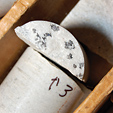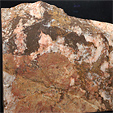All Articles
Legislative and Regulatory Update
August 2005 by Scott Harn
• BLM claim fees rise
Last year we reported on the Bureau of Land Management’s decision to raise mining claim fees to adjust for inflation. The higher fees were implemented, then rescinded by legislation that required BLM to meet several goals first.
These goals included the implementation of a permitting tracking system and delivery of a report to Congress addressing the length of time it takes to obtain a permit and how to reduce delays.
BLM was under pressure to meet these requirements by July 1, 2005, which is the beginning of the fiscal year for the agency, because the income generated from these additional fees was included when their budget was allocated.
On July 1, 2005, BLM announced in the Federal Register that they have met the goals established by Congress and published their intent to re-raise mining claim fees.
The new fee schedule follows:
Old New
• Location fee $25 $30
• Annual
Maintenance fee $100 $125
Mining claim holders must pay the new fees for all claims located on or after June 30, 2005. The annual maintenance fee, due September 1, 2005, will be $125 per claim.
BLM states they will notify claim holders who have paid the old rate, and provide them with an opportunity to submit the additional amount due for this year.
• Miners win in Karuk Tribe of California v. USFS
The Karuk Tribe of Northern California filed suit against the Forest Service in late 2004 in an effort to force the Forest Service to require a Plan of Operation for all mining in riparian reserves on several rivers in Northern California (“Suit Filed to Stop Mining in Northern California,” January 2005 issue; pgs 28-30).
In subsequent briefs filed with the court it was obvious that the Karuk Tribe intended to extend this requirement to all forests covered by the Northwest Forest Plan (NFP). This area includes public lands in Washington, Oregon and Northern California.
Riparian reserves (RRs) are defined as “areas along all streams, wetlands, ponds, lakes, and unstable or potentially unstable areas where the conservation of aquatic and riparian-dependent terrestrial resources receives primary emphasis.” In many areas this is generally construed as the area between high-water marks.
The Karuk Tribe argued that the Forest Service was not following its own NFP guidelines, which specifically stated that a Plan is required for mining in riparian areas regardless of the significance (or insignificance) of the mining activity. The tribe specifically went after dredgers who were operating under a Notice of Intent (NOI).
Various miners banded together with The New 49er’s, a mining club operating in Northern California, and intervened on behalf of the Forest Service.
The Forest Service and the Miners argued that the NFP guideline requiring a Plan of Operation for activities that do not cause a significant disturbance conflicts with the Code of Federal Regulations (CFRs) governing mining, specifically 36 CFR 228. In this case, the District Ranger had already determined that dredgers, who had already filed a Notice of Intent, were not likely to cause a significant disturbance.
The Forest Service consulted with the Karuk Tribe several times in early 2004. Following those meetings, the Forest Service placed several time and location restrictions on the Miners. The Karuk Tribe was not satisfied with the outcome and filed suit in late 2004.
The Forest Service addressed the conflict between the guidelines and existing mining regulations in several memos over the past ten years.
In 1995, the Forest Service issued a memo that clarified Part 228 mining regulations. The memo acknowledged that suction dredges were operating in areas covered by the NFP, and stated the majority would not require PoOs due to the “insignificant nature of their operation.”
In February 2002, another memo stated that requiring a PoO for mining that does not cause a significant disturbance would be inappropriate and “contrary to law and regulation.”
A third memo, in 2004, reiterated the same points.
The case was decided in favor of the Forest Service and the Miners in a Motion for Summary Judgment. Here are several of the key points addressed by US District Judge Saundra B. Armstrong:
“...Plaintiff’s narrow reading of the Klamath Forest Plan is untenable in light of the numerous regulatory and statutory provisions that apply to mining in national forests and blatantly ignores the fact that, pursuant to the General Mining Law and 36 CFR 228, the Forest Service may not interfere with mining that is not likely to result in a significant disturbance of surface resources.
“Further, Plaintiff’s assertion that the standards and guidelines have the ‘force and effect of binding law’ is flatly contradicted by the explicit language in the Northwest Forest Plan. Specifically, the Northwest Forest Plan clearly provides that its standards and guidelines ‘do not apply where they would be contrary to existing law or regulation, or where they would require the agencies to take actions for which they do not have authority.’
“…Plaintiff’s argument utterly ignores the fact that mining operations take place pursuant to the General Mining Law and the Surface Resources Act, which confers a statutory right upon miners to enter certain public lands for the purpose of mining and prospecting. This distinction is significant, as it differentiates mining operations from ‘licenses, contracts, leases, easements, rights-of-way, permits, or grants-in-aid,’ which are permissive in nature.”
The attorneys representing the Miners in this case were James Buchal and R. Dabney Eastham.
The court documents are available under “Court Cases” in the “Additional Resources” section on our website, www.icmj.com
The case is Karuk Tribe of California v. United States Forest Service, et al., US District Court for the Northern District of California, No. C 04-4275 SBA.![]()
Legislative and Regulatory Update
• Biden administration considers ban on new mining
• 30 x 30 Termination Act
The Montanore Copper and Silver Project
 This adit will be nearly 3.5 miles long when it reaches the ore zone.
This adit will be nearly 3.5 miles long when it reaches the ore zone.
The Bawl Mill
• Energy conservation? Or investing in power?
• Collecting Dividends from the "Brown" fund
• Come rain, sleet, or snow...
Alaska Minerals Poster Available from BLM
The BLM's Juneau Mineral Information Center has released a full-color 18x24 poster that highlights minerals from across Alaska.
Ask the Experts
Setting up a gravity dredge
Surviving The Boom and Bust Cycle
 Back when I was in college, when I first started classes, the demand for new engineers was so strong that every graduate had multiple job offers without even trying.
Back when I was in college, when I first started classes, the demand for new engineers was so strong that every graduate had multiple job offers without even trying.
Subscription Required:
The Bawl Mill
• Our Readers Say
• Greenstone Belts in Minnesota
• The Paradox Basin—Part II
• A Sleeping Giant
• Buying a Used Gold Dredge
• Looking Back
• Gold in Vermont
• Picks & Pans: Prospecting on Perry Creek
• 9th Circuit Court Hears Pilgrim Family Case
• The First Mine in America
• National Mining Hall of Fame to Induct Five
• Melman on Gold & Silver
• Mining Stock Quotes and Mineral & Metal Prices
Free:








